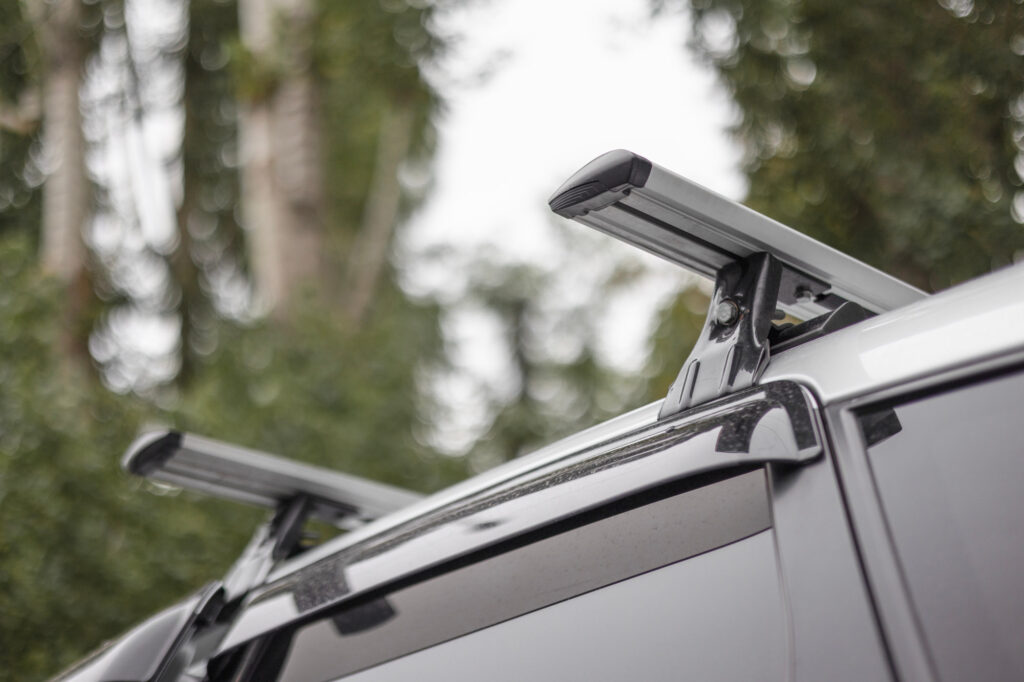Roof racks are accessories that you can install on your vehicle’s roof. You can use them to carry extra cargo, such as luggage and furniture. They’re also durable enough to support the bulk and weight of boats, bicycles, and all-terrain vehicles. In short, they’re perfect for sporty, outdoorsy drivers.
Whether you love exploring the great outdoors with your ride and a ton of equipment or just need extra storage space for your trip, roof racks are a great investment. Get to know their pros, cons, and other essential details to ensure you pick the best for your ride.
Benefits of Car Roof Racks
There are many reasons to get a roof rack for your ride. It can provide extra storage space, give your car a rugged aesthetic, and work as a long-lasting upgrade. It can also support unwieldy cargo and improve safety and stability when driving.

Provides More Storage Space
Arguably, the biggest reason any vehicle owner gets a roof rack is for the extra storage space. Roof racks can accommodate all sorts of cargo, including those that won’t fit in the trunk or cabin.
Gives Cars a More Adventurous Look
A car roof rack can subtly change the way your vehicle looks, giving it a more rugged, outdoorsy edge. It’s a quick and easy way to let people know you like to travel and do sporty activities, like kayaking or biking.
Lasts a Long Time
Roof racks are built to last. You won’t have to worry about replacing yours any time soon. They’re long-term investments that can withstand harsh weather and support tremendous amounts of weight.
Supports Unwieldy Cargo
If you have a roof rack, leaving behind cargo and equipment that can’t fit in your trunk or cabin will become a thing of the past. Roof racks can support heavy, unwieldy cargo, including boats, bicycles, and camping equipment. They also make it easier to haul cargo and furniture if you’re moving to a new place.
Improves Safety
A roof rack can shift the weight of your vehicle and adjust its center of gravity, reducing the risk of tipping over. After all, vehicles with heavy cargo centered in the middle of their bodies are less likely to roll over.
Moving the things that are typically mounted in the vehicle’s rear to the roof with the help of a rack also makes it easier to see what’s behind you.
Downsides of Car Roof Racks
Roof racks aren’t perfect. If you’re planning to get one, you must know that it can affect aerodynamics and strain the engine. It’s also not ideal for small vehicles, it can damage the vehicle, and it could affect handling.
Affects Aerodynamics
Installing a roof rack gives your vehicle’s roof a wider surface area, increasing wind resistance and drag. This could slow down your vehicle and create an unpleasant windy noise when you drive.
Pushes the Engine Harder
Roof racks are designed to carry heavy cargo. Unfortunately, the heavier a vehicle is, the more fuel it uses when driving, as all that extra weight forces the engine to work harder.
Impractical for Small Vehicles
Roof racks are heavier than they look. Small vehicles aren’t designed to support lots of weight which makes installing a roof rack impractical. Not only will they struggle to carry heavy objects, but the added weight will throw your vehicle off balance.
Can Damage the Vehicle
Improperly installed roof racks have the potential to do more harm than good.
For example, if the roof racks are fitted loosely or if they’re carrying too much weight, they can dent or otherwise damage the roof of your car.
Impacts Handling
Because roof racks change the shape, weight, and cargo-carrying capabilities of the vehicle, they can affect handling and make it hard to control your car. This is doubly true if you’re carrying heavy and unwieldy cargo, like boats.
How to Install Roof Racks for Cars
Roof racks aren’t particularly difficult to install, especially if your vehicle already comes with mounting points. Of course, the process can vary depending on the rack and your ride. Here’s how a general installation goes.
What You’ll Need
Before installing a car roof rack, make sure you have all the equipment you need.
- Roof rack installation kit
- Safety gloves
- Measuring tape
- Screwdriver set
- Torque wrench
- Car-wash soap and water
- Sponge or brush
What to Do
To install a car roof rack, follow these steps carefully.
- Assemble all the parts of the roof rack that need pre-assembly. Follow the instructions carefully and avoid over- or under-tightening any screws and bolts.
- Clean and dry your vehicle’s roof. Make sure there’s no dirt, grime, debris, or rust that might get in the way during installation.
- Place the components of the roof rack on the points indicated by the instructions that came with your roof rack. Secure the roof rack’s position on your vehicle.
- Tighten the screws and bolts to secure the roof rack on the roof. Consult the instructions that come with your roof rack to determine the appropriate torque settings.
- Test the roof rack’s sturdiness by shaking it. It should be firmly attached to your vehicle. If it wobbles or jitters, check if the screws have been tightened properly or if the rack has been assembled correctly.
Car Roof Racks: Frequently Asked Questions
Here are some commonly asked questions about car roof racks.
How much weight can a roof rack support?
On average, roof racks carry a maximum of 165 lbs. It’s possible to increase the load up to approximately 200 lbs on occasion, but it’s best to avoid this so that you don’t overstrain the rack and your vehicle.
Can roof racks affect your vehicle’s performance?
Yes, roof racks can affect your vehicle’s performance. They change the shape of the vehicle, increasing aerodynamic drag due to the bigger surface area the roof takes up. This gives way to more resistance, forcing your engine to work harder to maintain the same speed.
Depending on what the racks carry, weight distribution will also change the vehicle’s center of gravity.
Can you install any roof rack on your vehicle?
Though some roof racks can be installed on various vehicles, it’s best to find racks that are specifically designed to work with the model you own. This is because some racks might be too large and unwieldy to work on certain vehicles. Others are designed to support more weight than your car can handle.
Any information provided on this Website is for informational purposes only and is not intended to replace consultation with a professional mechanic. The accuracy and timeliness of the information may change from the time of publication.


































